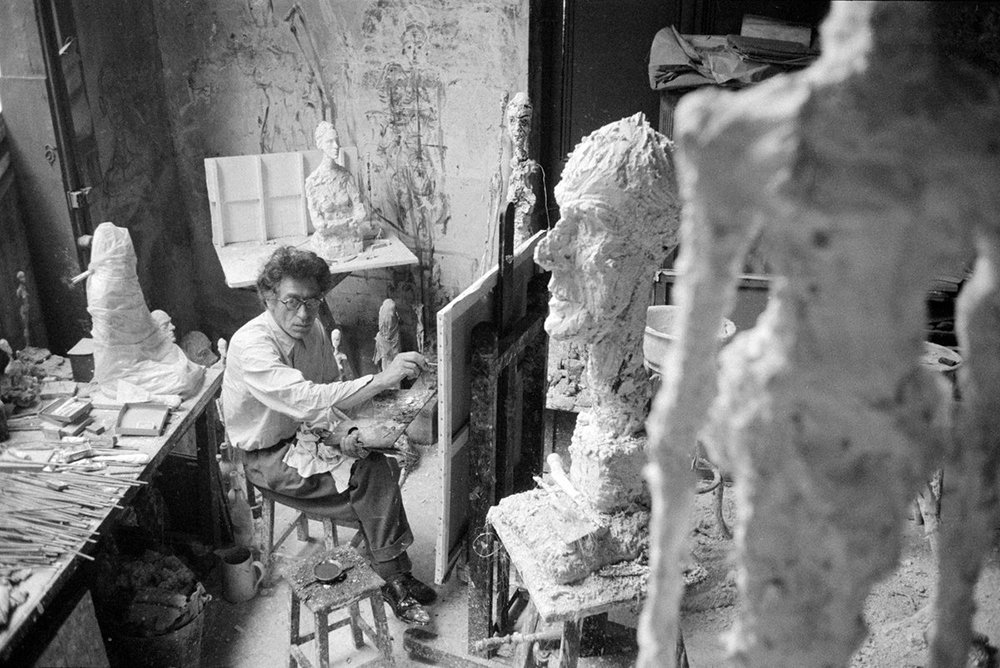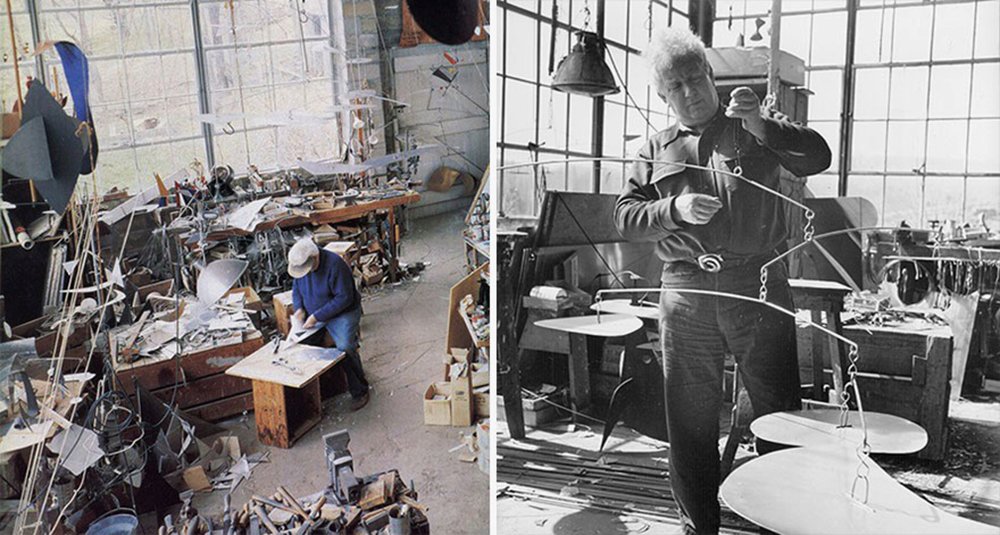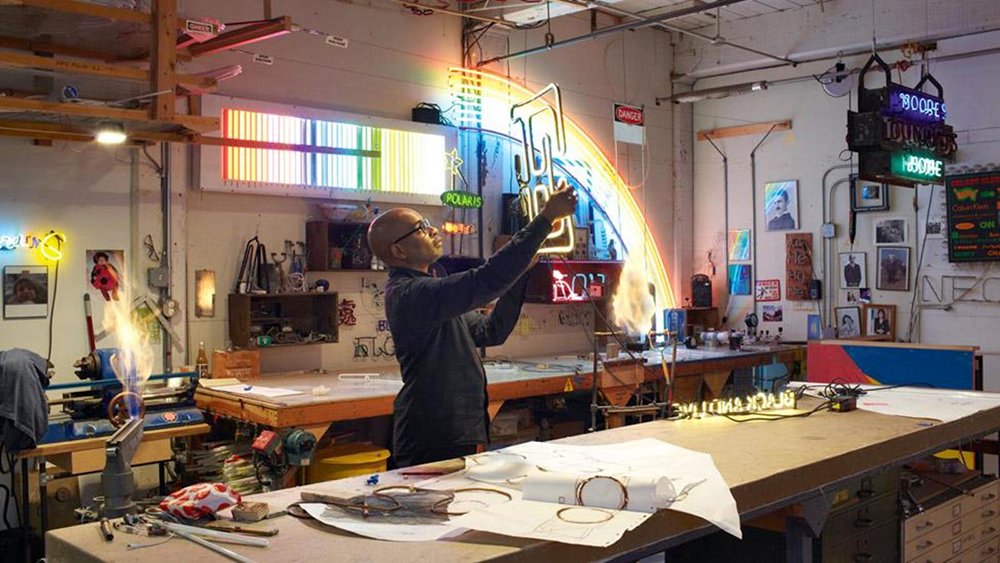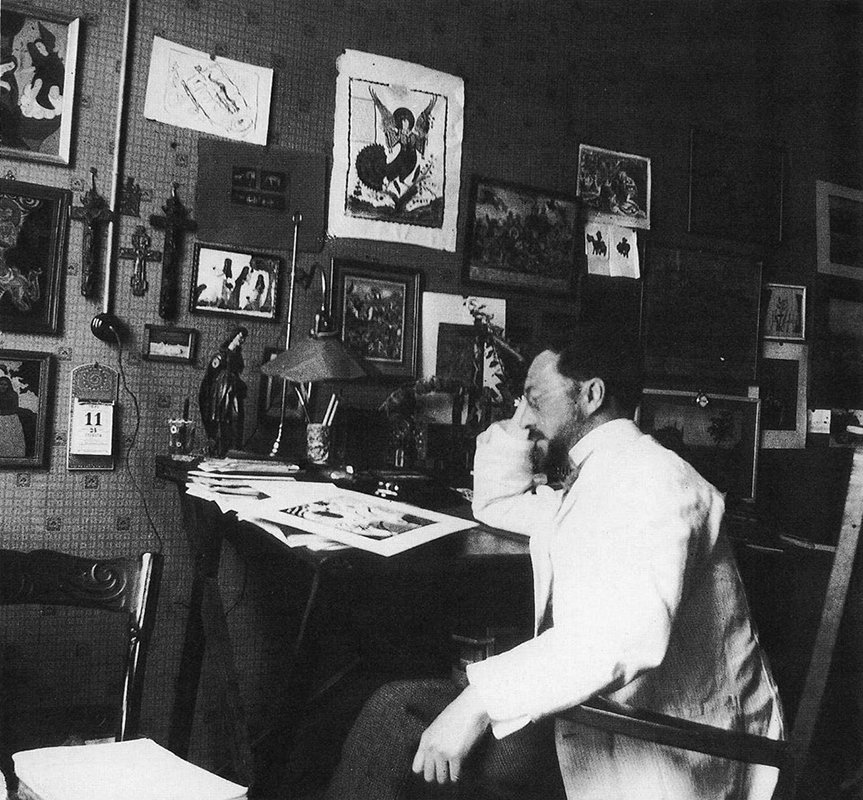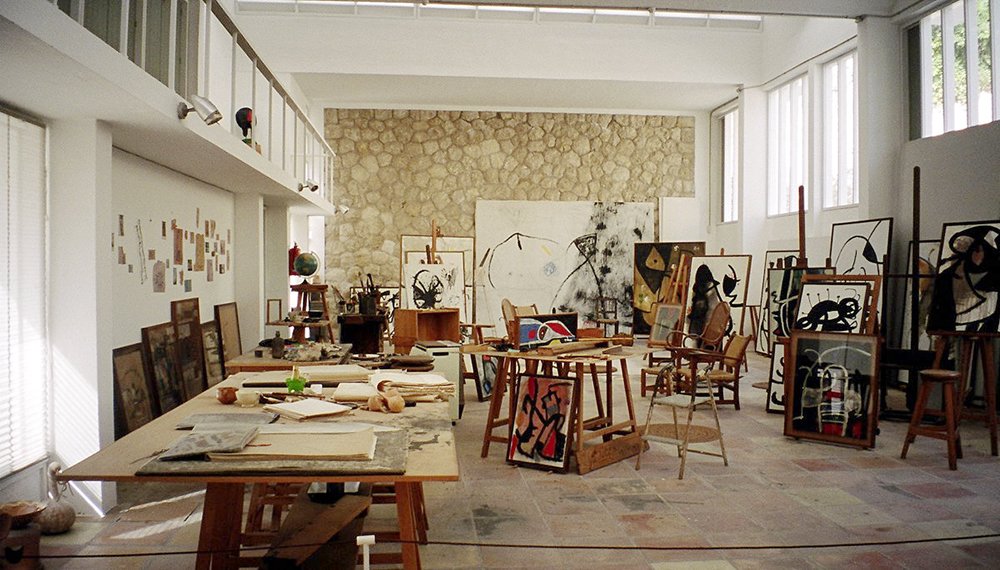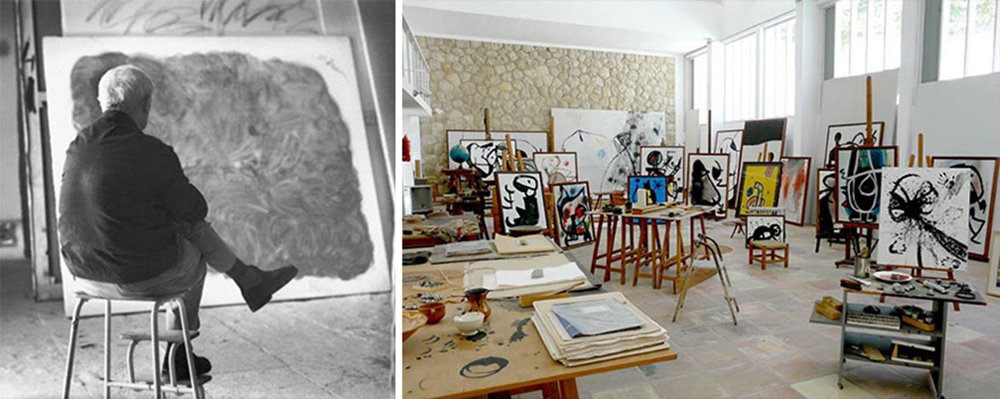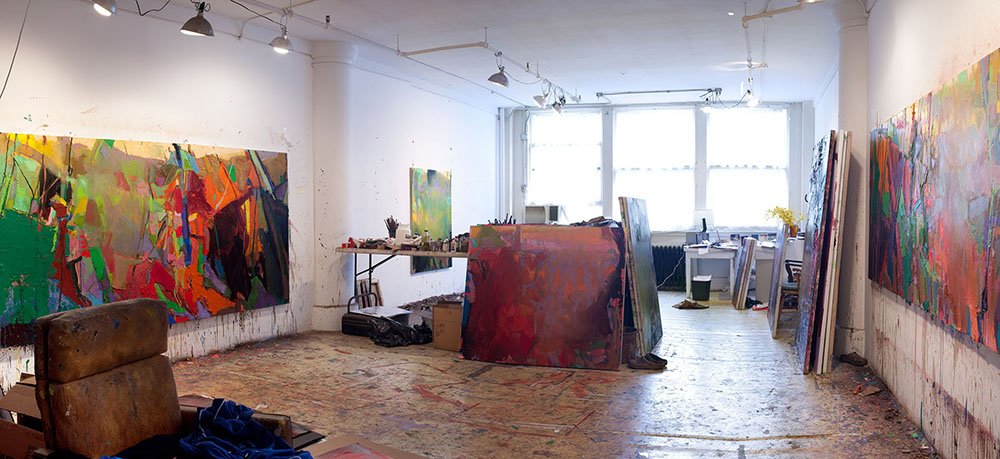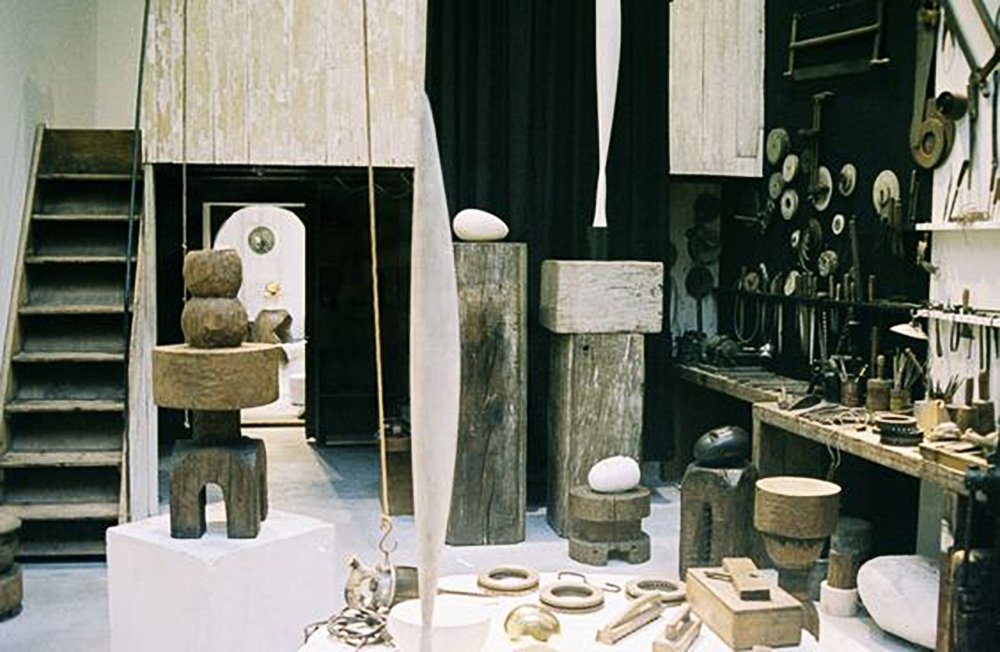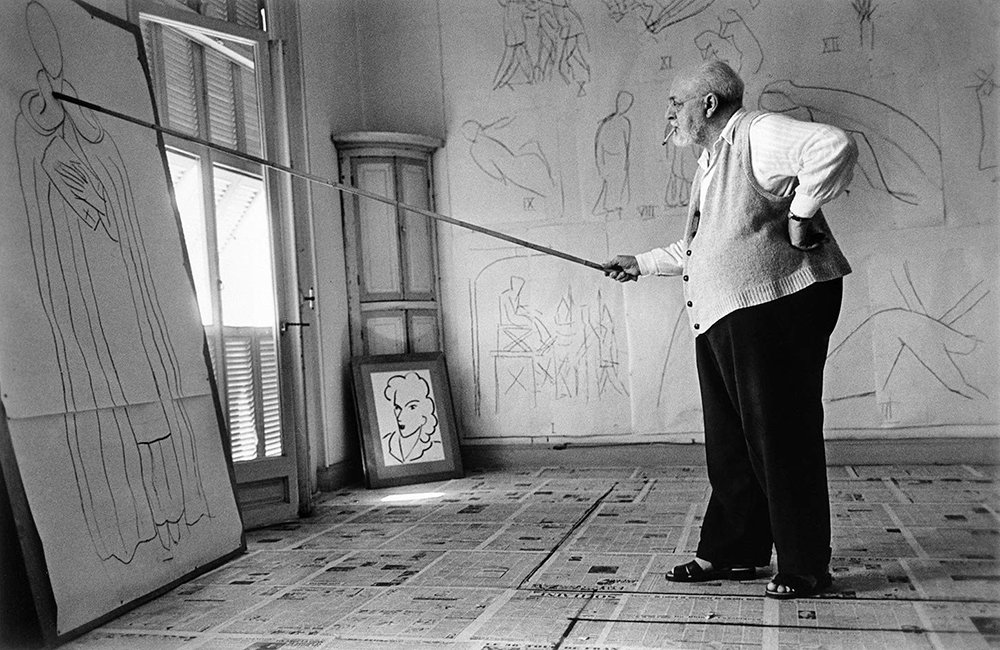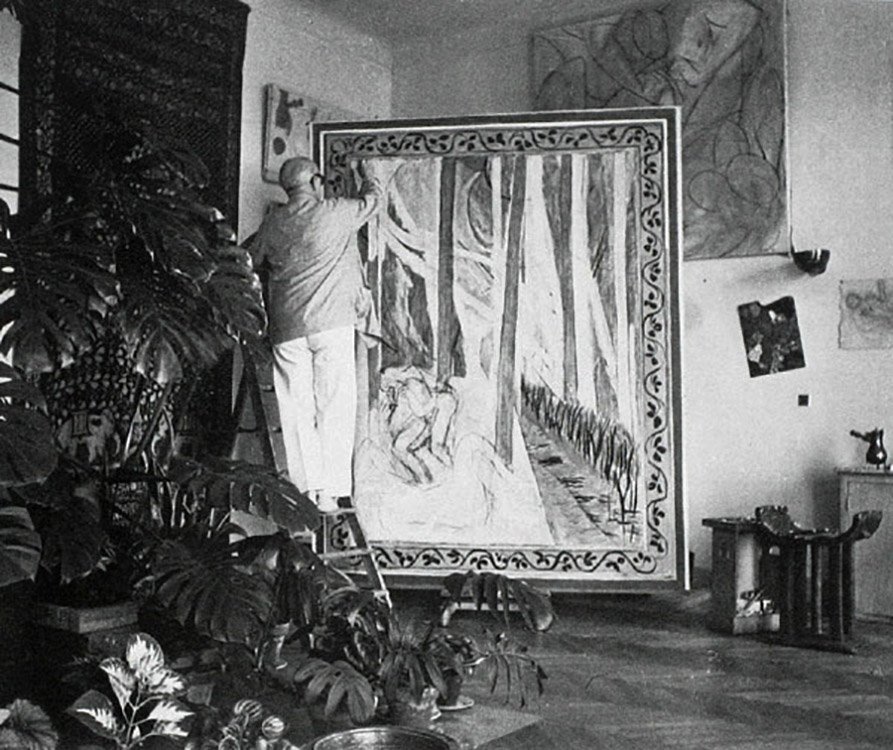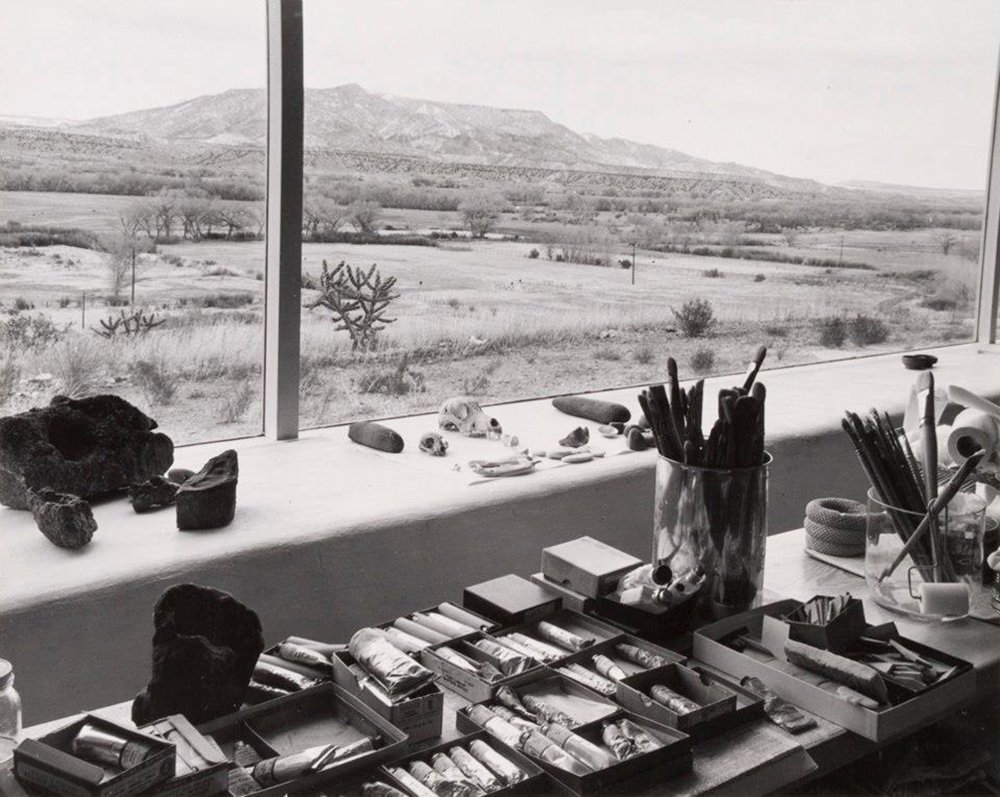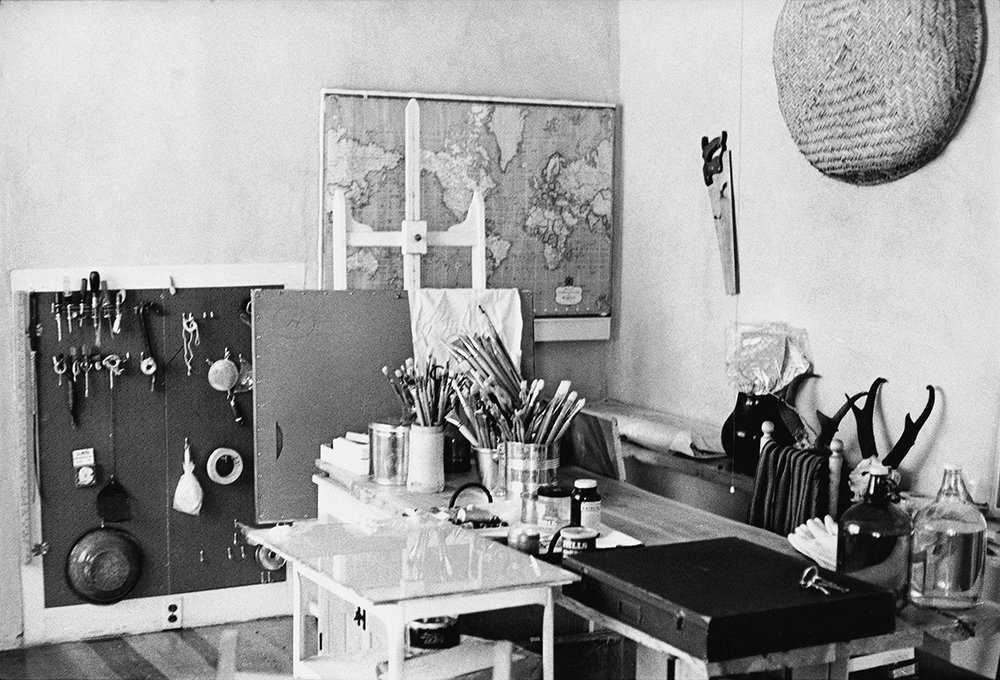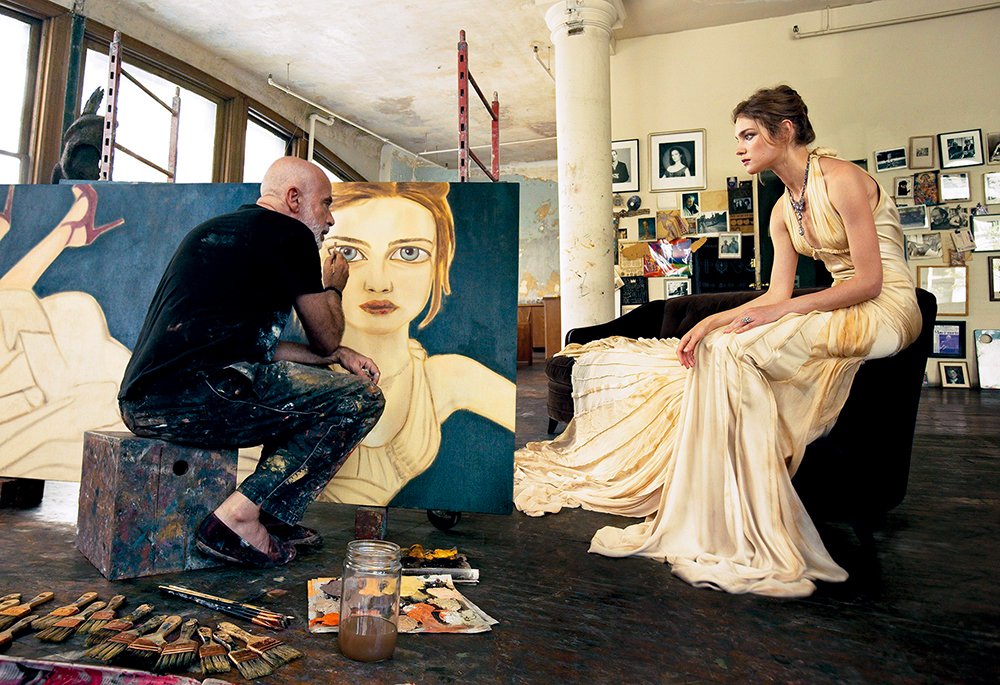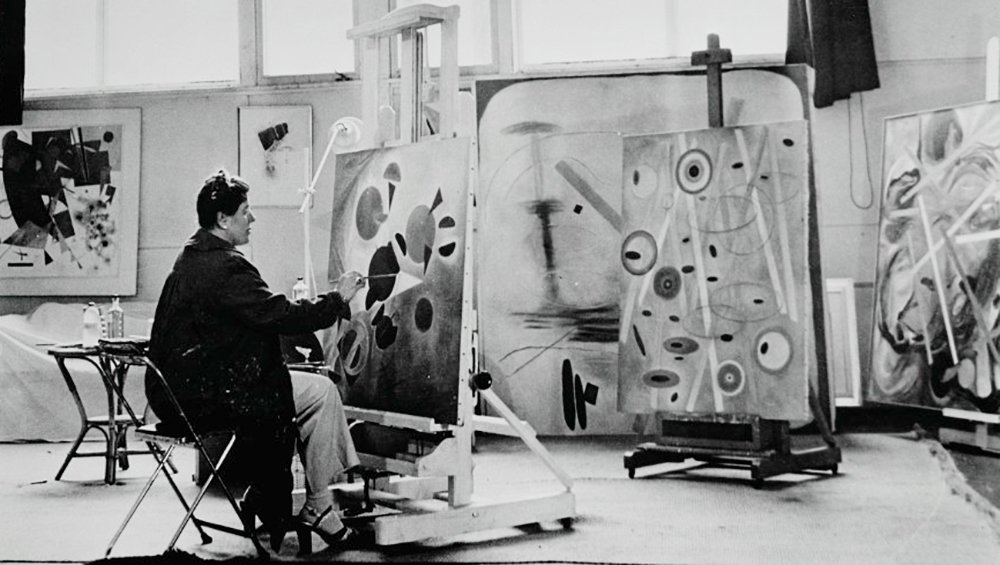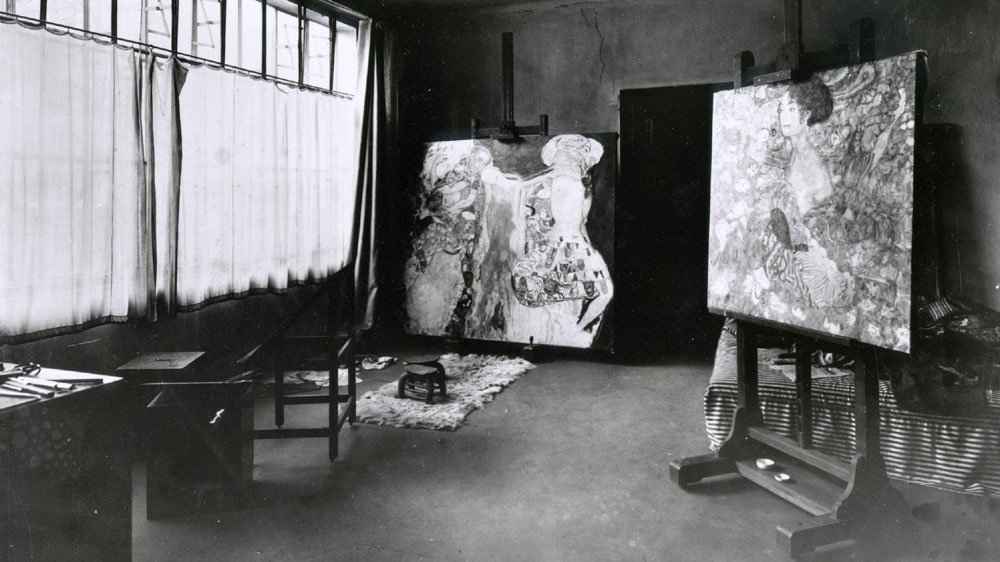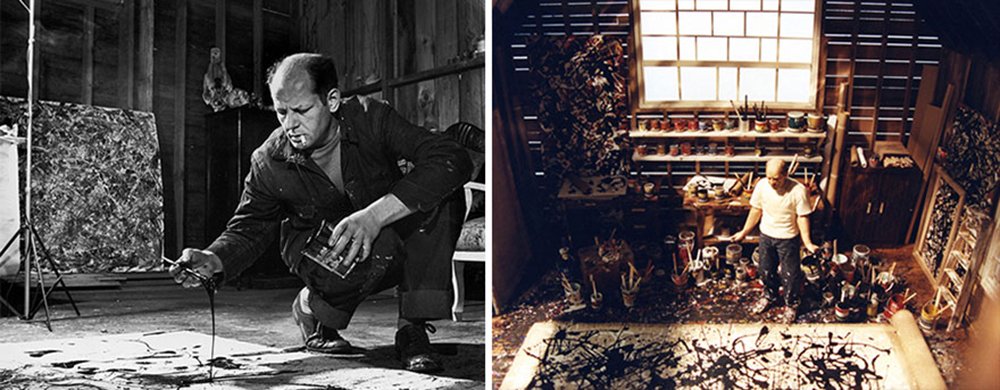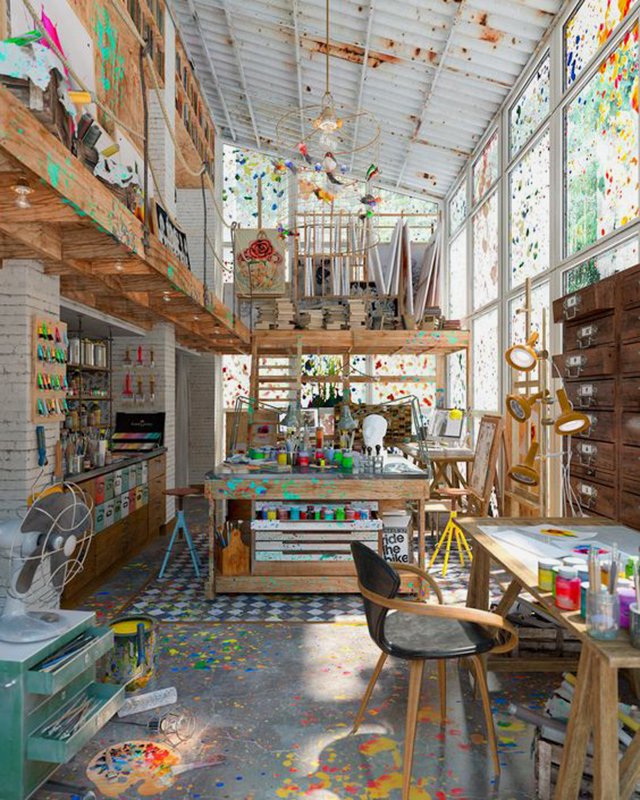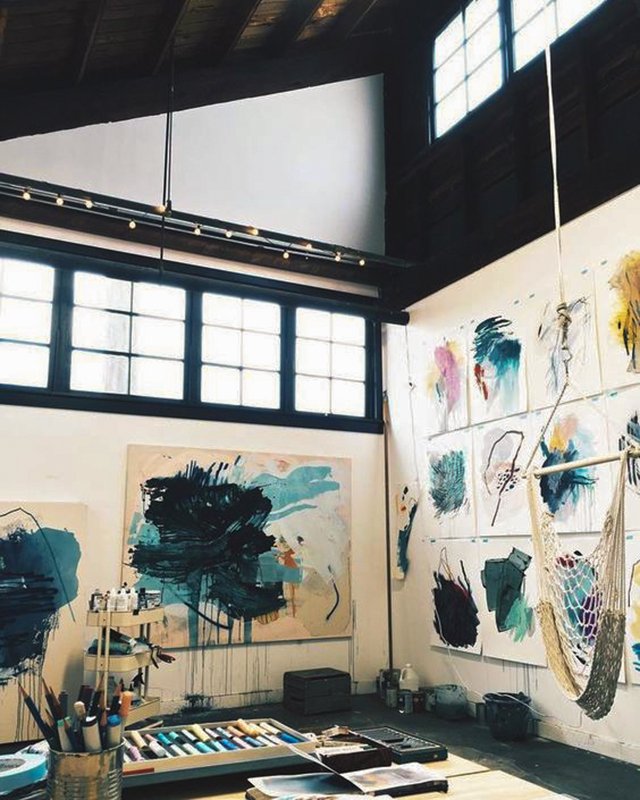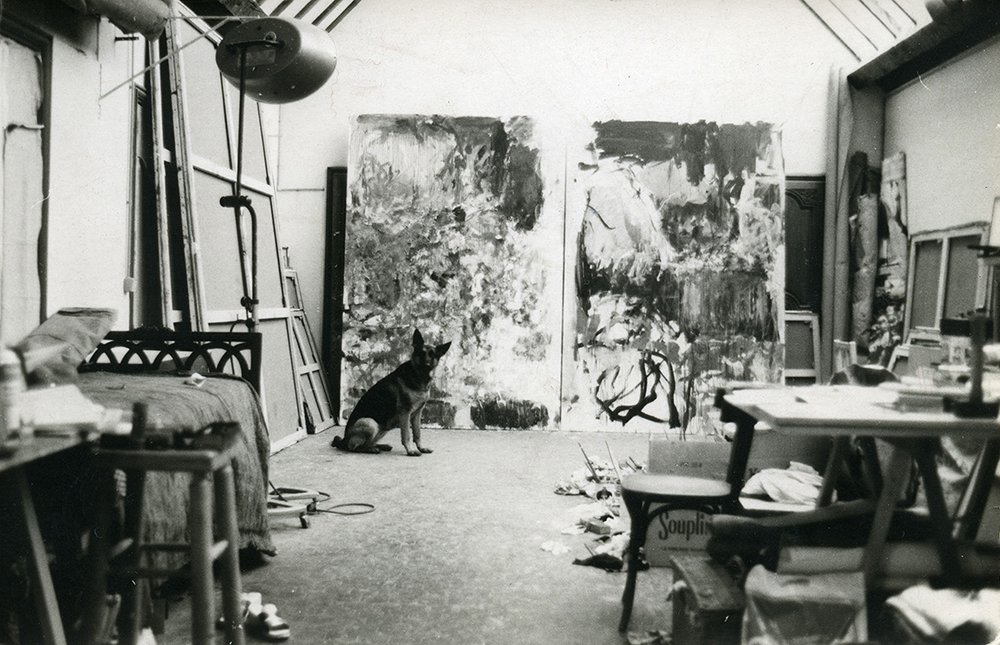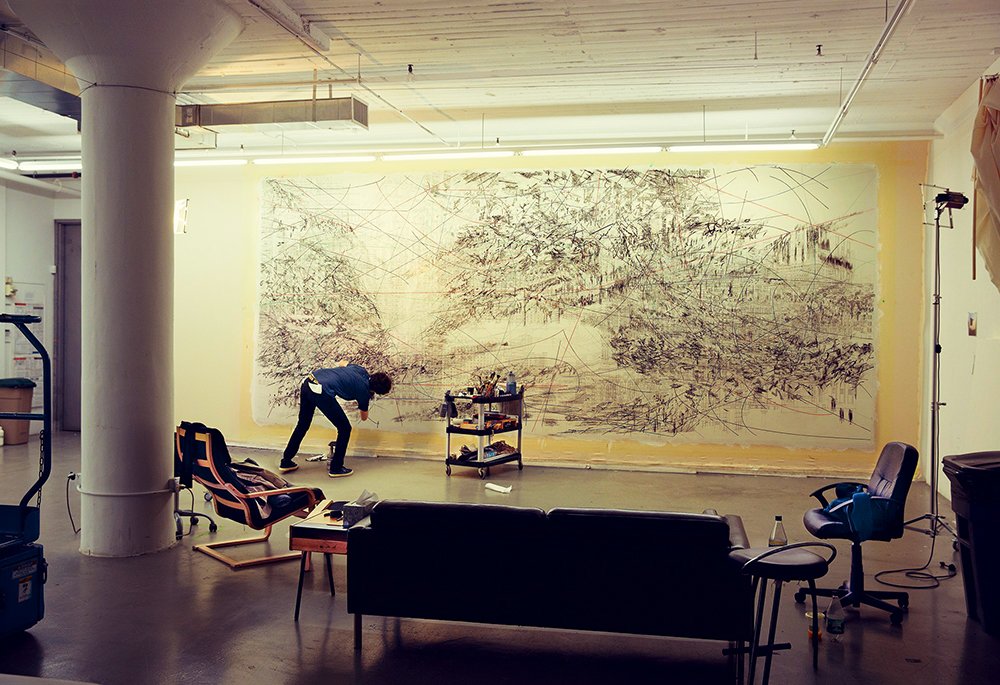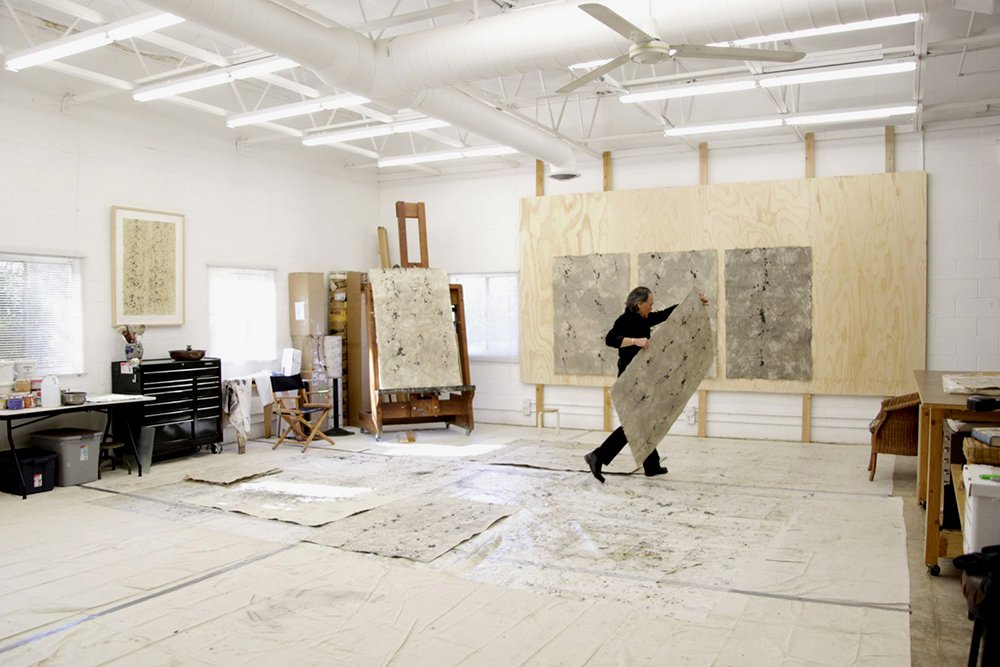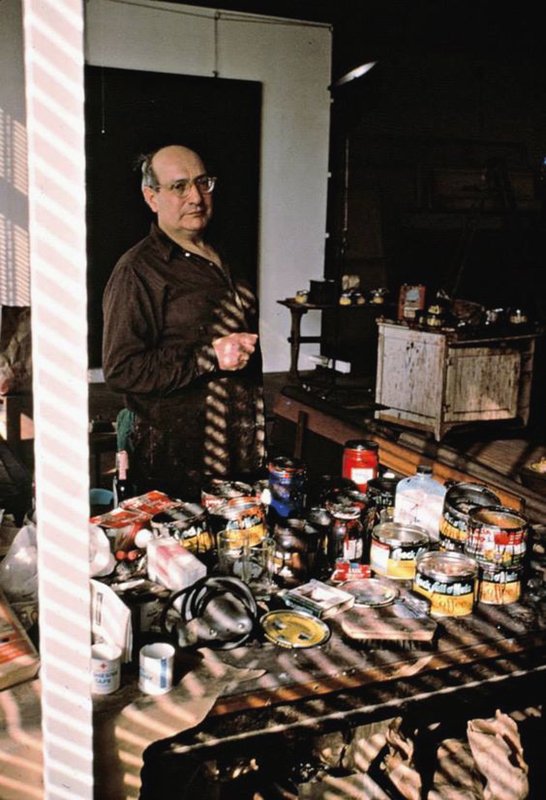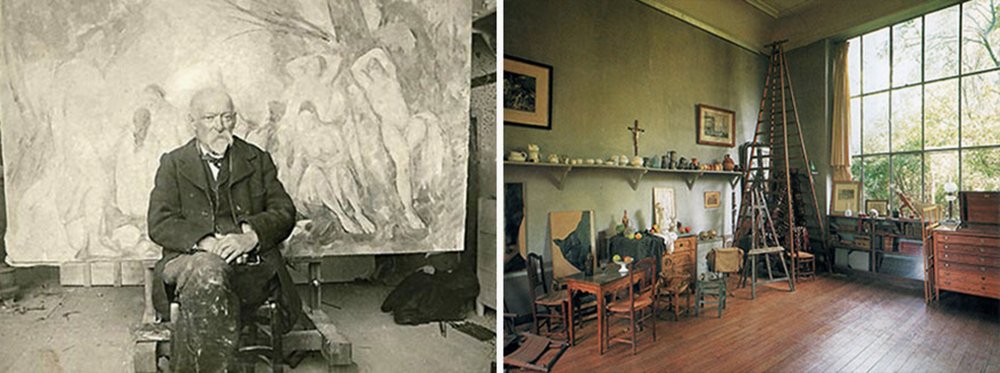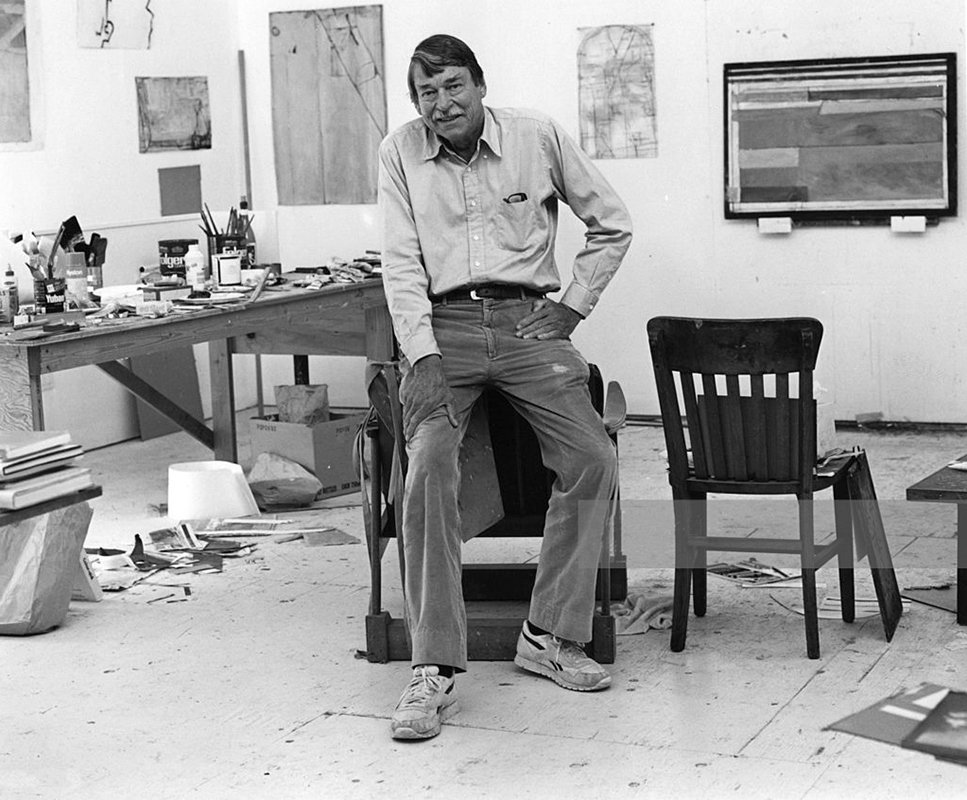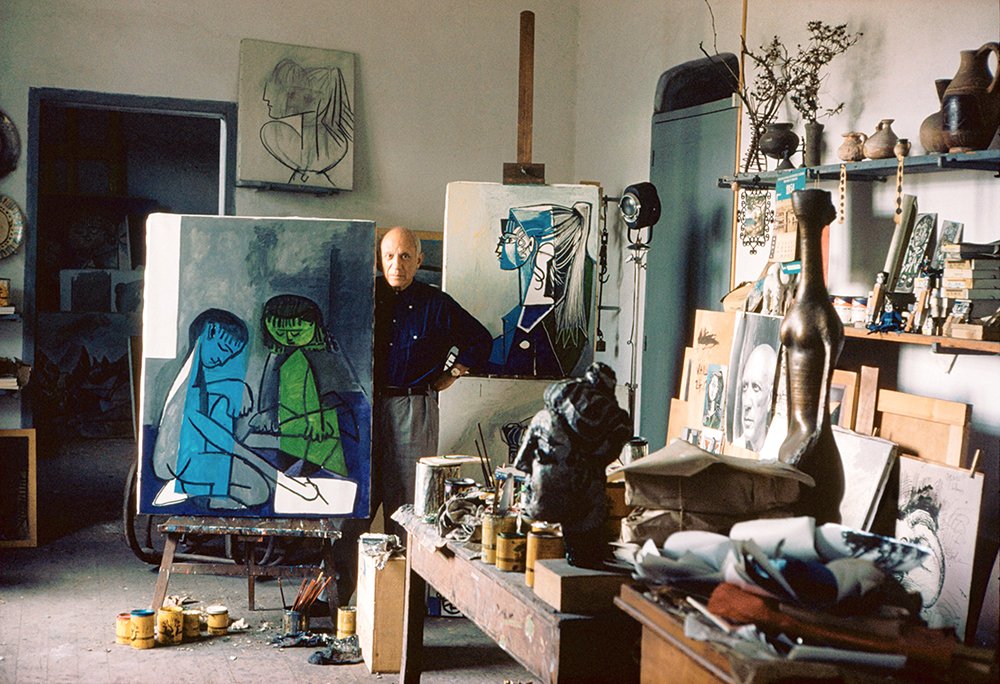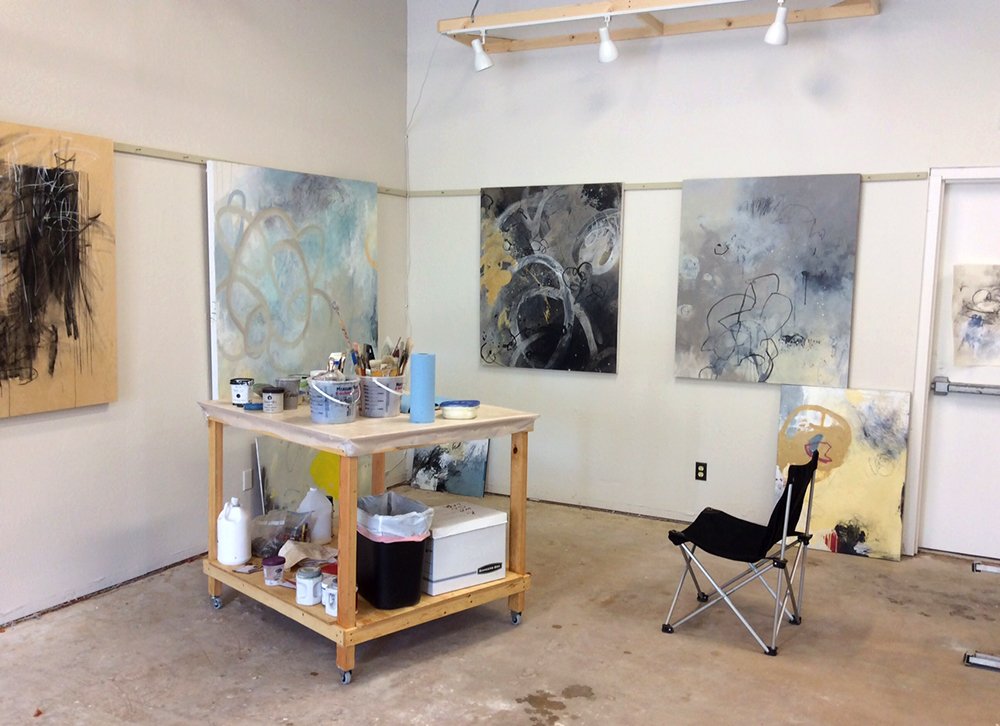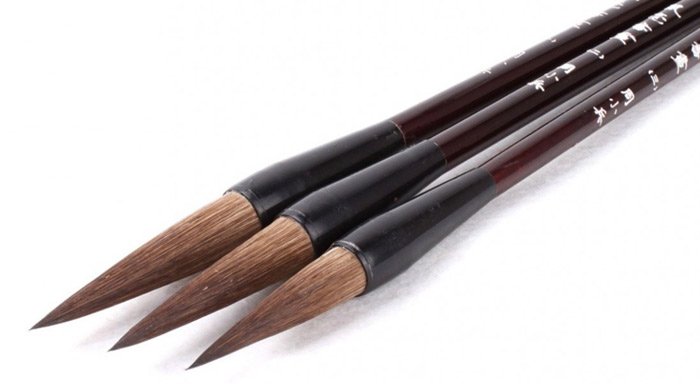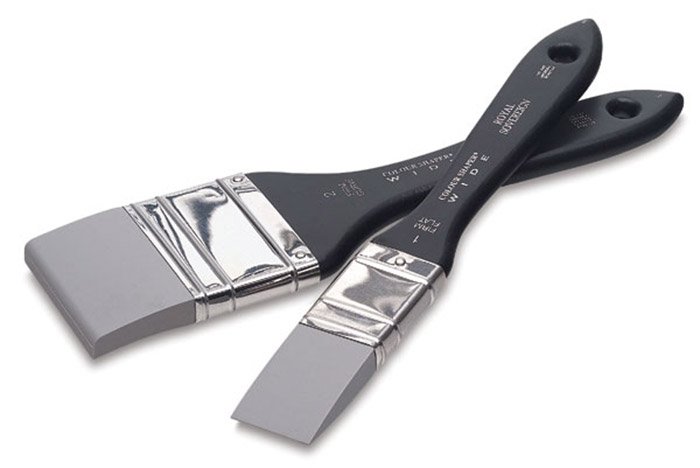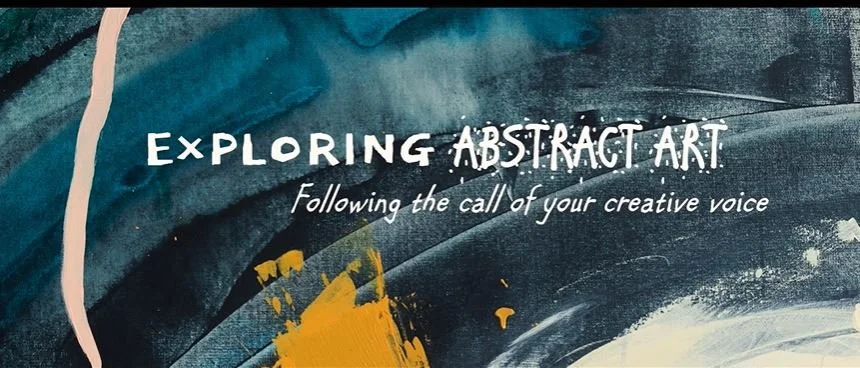
1 - Getting into the Studio
MODULE #1
GETTING INTO THE STUDIO
Creating a Studio Practice with Passion
"What in your life is calling you, When all the noise is silenced, The meetings adjourned... The lists laid aside, And the Wild Iris blooms by itself in the dark forest...
What still pulls on your soul? "
~Rumi.
In this Module, Getting into the Studio, we explore our longing to create and to trust the importance of following our heart desires. We then delve into what is needed to putting our passion into practice. We are asked to commit to showing up and doing the work, for creativity is an “inside job”. We explore how to stay inspired and carve out time and a place where we make creativity our priority. Through videos, answering questions, and slide shows our goal is to help you strengthen your intuition, to learn about yourself, and to build habits that will support and sustain your journey to flourish as an artist.
This Module has 4 parts:
1. The Creative Urge---trusting intuition and following the heart’s desires
2. Inspirations for Creating---what ignites and fuels the passion
3. Creating Your Own Workspace---a dedicated special place for creativity
4. Creating a Sustainable Studio Practice---a promise to show up and do the work
1. The Creative Urge
"When you have a dream, it often doesn’t come at you screaming in your face, “This is who you are, this is who you must be for the rest of your life.” Sometimes a dream almost whispers. And.... the hardest thing to listen to — your instincts, your human personal intuition — always whispers; it never shouts...... So you have to, every day of your lives, be ready to hear what whispers in your ear. And if you can listen to the whisper, and if it tickles your heart, and it’s something you think you want to do for the rest of your life, then that is going to be what you do for the rest of your life, and we will benefit from everything you do."
~ Steven Spielberg
The Art Lab Workbook
The Art Lab Workbook is THE place for you to record ideas, reminders, leads, resources, and inspirations. It is a place for words, images.....all manner of visual thinking. You can explore anything that helps you in your art studio practice. Here you can do self-inquiry and self-expression. It is not for anyone but YOU. Here is where you can take time for yourself and your art desires; this activity can help sort, focus, de-stress while giving you more self-awareness and self-reflection. It is a way to self-power and it is truly self-care.
"I love my art lab notebook.....I use it to explore new ideas in mark making/painting and I do a daily ritual of warm up images to get myself excited to start the day in the studio." Suzanne
To Do
Allow yourself to “feel into” what is pulling you, what you are longing for. Then, write the questions below and your answers in your Art Lab Workbook.
Questions:
1. What are your heart's desires, your yearnings, your creative urges?
2. Can you remember when you first felt these longings or urges to create.... notice and describe how long they have been with you....and what they feel like in your body.....
3. How do they get your attention? Is it a tug, a whisper, an imperative?
Share them with your fellow participants on Facebook.
2. inspirations for creating
"The whole culture is telling you to hurry, while the art tells you to take your time. Always listen to the art."
- Junot Diaz
Allow yourself to “feel ” what inspires you, what ignites your passion, touches your heart, opens your own desires to express and create. Then, write the questions below and your answers in your Art Lab Workbook.
Questions:
1. What inspires you? What opens your heart? What brings you peace, beauty and love? What nourishes you deeply? Create your own list with images of who and what inspires you. (thoughts, images, poetry, music, other artists.....etc.)
Find photos of things that excite you, make you happy, that come from your heart. This can include poetry, music, memories, dreams, love, a studio, etc.
Allow your being to say “Yes!” to your inspirations.
2. Do you surround yourself with love and inspirations and creative nourishment? How do these inspirations work on you to open you to a bigger vision.
Share them with your fellow participants on Facebook.
3. CREATING YOUR OWN WORKSPACE:
The importance of a studio as a Sanctuary and Creative Incubator
"To have a sacred place is an absolute necessity for anybody today. You must have a room or a certain hour of the day or so, where you do not know who your friends are, you don't know what you owe anybody or what they owe you. This is a place where you can simply experience and bring forth what you are and what you might be. This is the place of creative incubation. At first, you may find nothing happens there. But, if you have a sacred place and use it, take advantage of it, something will happen."
~ Joseph Campbell
The word studio is derived from the Latin word stadium, meaning “to study.” The French term for studio is atelier. Besides referring to an artist’s place of study, the atelier has the connotation of housing an alchemist or wizard. So, I like to think of my studio as a creative sanctuary, a sacred place where I experiment, transform, and produce magic.
Joseph Campbell reinforces the importance of the studio as a sacred place beyond a well-appointed area for painting and storage of art supplies. It is a personal preference whether the artist's studio is part of the living space or in an outside or separate space. The most important thing is to have a place where one is insulated from outside intrusions, and where one can give one’s full attention, Presence, and devotion to one's own voice. Whether it be large and expansive or the humblest of space, it is important it be designated, utilized, and honored.
In summary, an artist's studio is a place where the artist retreats from the daily world for the sole purpose of creating. Where the work produced is the most important thing, not the physical studio itself.
Here's a peek into some Artist's Studios
To Do
Envision your ideal workspace. Feel how your current workspace suits your dreams. Then, write answers to the questions below in your Art Lab Workbook.
1. Do you have a dedicated workspace? Describe your ideal studio/workspace.
2. Describe your actual workspace and how you might like to make it special for you.
Share the answers to the above; take a photo of your creative space and share it with your fellow participants on Facebook.
4. creating a sustainable studio practice
“When you start working, everybody is in your studio – the past, your friends, enemies, the art world, and above all, your own ideas – all are there. But as you continue painting, they start leaving one by one, and you are left completely alone. Then if you’re lucky, even you leave.” ~ John Cage
To Do
Take a moment to consider your own art making process. Image your ideal life of creativity including how much time you desire to devote to your studio practice. Notice how you start your day of creativity. Notice what helps you to let go of all the stories and chores and allows you to become totally open and Present as you enter into your studio. Then, write the questions below and your answers in your Art Lab Workbook.
Questions:
1. Do you create each day? How often? Is this often enough? What is your creative goal for a studio practice......?
2. Do you set an intention when you create?
3. What rituals if any do you do to begin your creative time?
Share your answers to the above questions with your fellow participants on Facebook.
Resources
Video: Stephen Spielberg - Listen to the Whisper
Books:
The Artist's Way: A Spiritual Path to Higher Creativity - Julia Cameron
The Courage to Create - Rollo May
The View From the Studio Door - Ted Orland
Big Magic: Creative Living Beyond Fear - Elizabeth Gilbert
Creativity - Where the Divine and the Human Meet - Matthew Fox
Daring Greatly - Brene Brown
Letters to a Young Poet - Ranier Maria Rilke
TOOLS / PAINTS / ACCESSORIES / SUBSTRATES
"Being familiar with art materials and what you can do technically, will only heighten your ability to express emotion." ~ Donna Baspaly
In this page we discuss the various items that are needed for this course and for your own studio equipment. We encourage you to test out different tools, paints, accessories and substrates so you can find what "feels" good and works for you. As you develop your own methods and style of painting, you will more than likely hone your studio supplies to be exactly what you need and want.
NEW TO ABSTRACT ART?
We suggest that you choose one silicone shaper (we recommend either a slanted one on a stick or a hand grip flat one), one scraper (2" or 3"---an old credit card works too), a 2" chip brush, a number 2 round brush, a number 8 flat brush, and a palette knife for mixing paint to start with. You can add as you go...... You will need all of the colors listed here and all the miscellaneous studio equipment. Above all, you need to have a mixed media workbook and we recommend the 11" x 14" size. You can do most all of the course in your workbook and use larger paper or canvas as you feel ready to do so. Please buy a piece of black pastel and a water-soluble 9B graphite stick plus an eraser. Then you are all set to go!
Tools and Materials List for Course
We chose to keep all of this studio equipment together on a single page. So to help you skip to the section you desire by clicking on each item.
1. TOOLS
Paint Brushes
Shapers
Scrapers
Palette knives
Brayer roller
Drawing tools
2. PAINTS
3. ACCESSORIES
4. SUBSTRATES
1. TOOLS
Tools are very important in abstract painting for they are used to apply the paint on the chosen substrate. Whether it be our own hand, or a fancy, expensive, important brush, each implement has unique properties which leave a distinctive signature of how paint is applied. Each tool will give a different look to a painting.
We recommend each artist try a sampling of the tools mentioned here so that one can make a variety of paint applications as well as a variety of marks. Each artist will find their own favorite method of applying paint through experimentation and practice.
Like most things in painting, it is not necessary to have so many possibilities that the artist does not become skilled at any. So, we suggest experimenting and finding a limited number of ways and methods of painting that fit your own desires. Often the beloved tool is handmade or make shift or made from desposible material. Here are a few tools we recommend trying….
Paint Brushes
Paint brushes are great tools for applying paint in a controlled manner. They are made of various fibers from natural to synthetic. Some are better for acrylics than others. For acrylic paints, synthetic brushes make for a smooth and even application. Brushes come with different length handles. The longer the handle, the less the artist is in control so we recommend having a few long handled brushes for abstract painting. Paint brushes also come with different heads: each head lays the paint down differently so it is great to learn what each brush does and experiment with it on how it works with acrylic paints of different viscosities. Paint brushes come in a number or sizes, with the larger number having bigger heads for a wider brush stroke.
Round---Number 2 is good for detail work, while 8 to 10 is good for a smooth wide line
Flat---the bigger the number, the wider the head
Filbert—this is a variation on the Flat brush with a curve to the top. The bigger the number, the wider the head; good for smoothing paint together.
Fan---The bristles are spread out like a fan. It is good for feathering paints together, blurring and blending with a dryer brush.
Chip Brushes are inexpensive brushes with natural bristles purchased at hardware and paint stores. They are versatile and come up to 4” wide which makes them great for gessoing and painting large.
Specialty Brushes
Mop Bristle Brushes hold a lot of paint and are great for applying larger amounts of paint without needing to be dipped into the paint as often. They work well for dripping and splattering as well. Great for medium to fluid paints.
Calligraphy Brushes, are soft natural haired brushes that are floppy and loose and often come to a point, so they are great for making lines, splatters and less controlled marks with paint that is fluid.
Shapers
Flat, wedges and handled Shapers
Shapers are crafted from flexible silicone. They are designed for use with heavy-bodied paints. The silicone is easy to wipe clean and is solvent resistant. Clean up in most cases can be done with soap and water. Dried paint can be peeled off the silicone surface. They come in a variety of shapes, widths, thicknesses, some with angles, handles, teeth. They are great for moving the paint around evenly and can go right to the surface. They are great for varying the depth of the paint. If used with fluid paints, they are great for moving the paint around on the surface. They make great marks with their edges. The come in different shapes, and sizes. The shapers on handles make for nice textures in applying the paint.
Scrapers
Another tool for moving paint around, Scrapers are stiff plastic and can be gotten from the paint section in the hardware store. They come in different sizes up to 4” wide.
Squeegees are made of wide edged stiff yet flexible plastic inserted into a wood board. Both scrapers and squeegees leave a hard edge. Squeegees come in larger sizes for larger paintings. They are able to scrape paint right down to the surface and leave a thin layer or they can be used with a light touch and leave a thick layer of paint. They are also good for scumbling, mixing paints in a streaking manner as they are applied. A large scraper with a metal blade can be used much like a squeegee for larger paintings.
Finally, there is a tight foam rubber squeegee that screws onto a broom handle and can be used to move large amounts of thin paint around on a large surface.
Palette Knives
Palette Knives have flexible stainless steel blades, usually with wooden handles, great for mixing paints and applying paint. They come in many shapes and sizes so it is important to find one (s) that work for the purpose chosen. The Palette knife has a distinctive look when used for paint application. Impasto to fine detail work. Large palette knives are great for working large.
Rubber Brayer Roller
The Rubber Brayer Roller is Made of medium to hard rubber with a the strong, durable wooden or plastic handle, perfect for applying paint in a thin continuous band the width of the roller. Comes in many widths up to 6” and varying hardness of the rubber. Clean with soap and water. They have a distinct look to them and are good for putting thin coats of paint for veiling. They have a definite edge, the width of the brayer. These edges may give the painting a more geometric look.
To Do
1. Choose three tools such as a shaper, a paint brush, a palette knife, a roller, a scraper, etc., and play with each for its use and possibilities. Do your experimentation in your Art lab workbook.
2. Make note of which tool does what and what you like about each.
Share to the Facebook of your findings about the tools you chose.
"The hand is the tool of tools." ~Aristotle
Drawing Tools
Erasers
Art Gum, rubber and kneaded erasers are the three most common kinds of erasers. Each has their own characteristics which should be explored.
Graphite
Graphite can be in a pencil form, a stick water soluble and water non-soluble form and can even come in large bars and as a powder. Graphite stick forms come in varying hardnesses and therefore of varying lightness and darkness. Water soluble graphite has a smooth buttery glide and dissolves when wet.
Charcoal and black pastel
Charcoal is wood that has been heated and burned slowly to produce a residue that holds together and the black ash rubs off. It comes soft to hard. Generally charcoal is not a rich black. Black pastel is composed of powdered pigments held together with an aqueous gum binder and goes on like a smooth chalk. It is usually very black and rich. Both are great for smearing and blending and create interesting textures when an eraser is used on them.
Note: When using graphite, charcoal or chalk pastels, they will smear unless sprayed with fixative, dabbed with a medium, or used directly into a medium that is painted on and still damp.
To Do
1. With each drawing tool, explore various marks. Then go even further and smear them, erase parts, and dampen parts. Do your experimentation in your Art lab workbook.
2. Make note of which drawing tool does what and what you like about each.
Share to the Facebook of your findings about the tools you chose.
2. PAINTS
In this course we request that you use Liquitex brand heavy body paints. These are of professional quality and we have chosen them as they are middle of the road pricing and because on each tube you will see an opacity scale to help you understand this important characteristic of the paint. We suggest that you buy warm and cool tubes of paint of the three primary colors plus an opaque white and an opaque black.
Alizarin crimson (cool)
Cadmium red medium (warm)
Cadmium yellow medium (cool)
Yellow orange azo (warm)
Cobalt blue (cool)
Cerulean blue (warm)
Titanium white (large size, can also substitute Liquitex gesso)
Mars black
3. ACCESSORIES
List of Supplies:
1. Sponges
2. Tray
3. Hair dryer
4. Water bucket
5. Paper towels
6. Palette paper
7. Tracing paper
8. Scissors
9. Ruler
10. Blue tape or artists tape
11. Glue stick
12. Sand paper
13. Spray bottle
Note: For these general accessories you can purchase them at your local grocery store, hardware store and local art store.
4. SUBSTRATES
Paper
In this course we will be using only mixed media papers that can handle wet and dry painting. It does not mean that other substrates such as canvas or wood or watercolor papers cannot be used. We simply made a choice to focus on and use only one kind of paper.
Mixed Media Workbook
This workbook is the mainstay of this course. Made of heavy-weight paper, It can handle both wet and dry media. We recommend the 9" x 12" or 11" x 14" spiral-bound notebook.
Mixed media paper
18" x 24" is the paper we suggest for small studies by being divided into 6 rectangles. Canson makes a good paper at this size.
Mixed media heavyweight archival paper comes in 22" x 30" and 30" x 40". For this course, we recommend these sizes or halving the paper so that it is 15" x 22" or larger is the most common size for compositions,
Canvas
Using canvas is beyond the scope of this course but we want to list it as a possible substrate.
Wood
Using wood panels is beyond the scope of this course but we want to list it as a possible substrate.
"It is the reformation of material which is what art is all about... we reform it to where it does that tuning fork to our knowledge of form within." ~Mark Di Suvero
Resources
We have found the following online stores most suitable for all art supplies needs.
"Let there be an opening into the quiet that lies beneath the chaos, where you find the peace you
did not think possible and see what shimmers within the storm."
~John O'Donohue
EXERCISES
These exercises are designed to help you let go of other agendas that might be on your mind and to prepare you for working in your studio so you may give yourself wholeheartedly to creating. It is important to release the mind’s grip on thoughts and bring your attention into the sensations of your hand and into your body in the now. This will bring your focus on what you are actually doing so that you will naturally relax and let go of distractions or thoughts that may keep you from being clear and free and fully creative.
List of Materials:
Graphite pencils
Charcoal
Large drawing paper 18” x 24”
Warm-up Exercise #1
With eyes closed feel the paper----it’s size, texture, placement and its edges. Let your hands experience the sensations. Do this for 15 to 20 seconds. Then without opening your eyes, take the graphite pencil into your dominant hand and make a flowing continuous line all over the paper for as long as you want until you feel that you have dropped from your mind into your bodily sensations.
Warm-up Exercise #2
With your eyes closed or open, feel the paper. Take the graphite pencil in your dominate hand and scribble for approx. 15 seconds filling the whole paper. Next, do the same with the graphite pencil in the non-dominate hand on the same sheet of paper for approx. 15 seconds. Finally scribble with graphite pencils in both hands at the same time all over the paper for another 15 to 20 seconds.
If you do not feel that you have loosened up enough, repeat the exercise until you are relaxed and feel that you have dropped from being in your head to being in your body.
Warm-up Exercise #3
Play music that you desire and with a piece of charcoal or black pastel fill the paper with marks that reflect the rhythm, mood, tempo of the music you are listening to. Again, do this until you feel relaxed and carefree.
Here are some of our favorite music selections:
Ave Maria - Ashana
Concerto Grosso Op. 6 No. 1 in G major - G. Handel
Coming Home - Paul Cardell
Morning Has Broken - Cat Stevens
Only Time - Enya
Concertina for Flute and Piano- James Galway
Flight of the Bumblebee - James Galway
Equinox - John Coltrane
"We are what we repeatedly do.
Excellence, therefore, is not an act, but a habit."
~Aristotle
BONUSES
FROM FEAR AND RESISTANCE TO COMMITMENT AND JOY - STAYING INSPIRED!
We start out all excited, sign up for a course full of enthusiasm, buying supplies, bursting with ideas.... Then, when it comes time to actually get into the studio, we often find excuses like "I am not in the mood", I don't have enough time", "Who do I think I am to think I can create something worthwhile?", or even feeling overwhelmed because "I just don't see how I can get from my vision of what I want to paint to making it actually happen"......so we give up and don't try. And, on it goes, etc., etc......
We went from feeling full of joy and aliveness to feeling deflated and defeated. These feelings of resistance, negative self-talk and overwhelming emotions are showing up because we are really afraid. We are afraid of not being worthy, not being good enough, fear of failure, fear of not being liked or loved, etc.
The good news is there is a way out of this bind and that we can actually stay inspired and excited to go into the studio every day!
Here is the process that Grant and I have found to stay fully engaged and energized.
First step is to actually recognize our thoughts, behaviors and feelings. We call this AWARENESS.
We suggest that you, too, take some time to look at your own thoughts and actions that keep you from being fully Present and losing steam. It is great to write them down.
The second step is to allow these thoughts and know that they are normal and natural whenever we try to undertake something new that is of value to us. We call this ACCEPTANCE.
The third step is to realize we are exactly where we need to be and give ourselves slack, give ourselves kindness. We call this EMBRACING WHAT IS WITH COMPASSION AND LOVE.
With these three understandings we can then begin to learn new ways of being and OVERCOME any obstacles that seem to block our way to creating our heart's desire.
We have also found that cultivating the following ways of being will change our perspective from outer to inner, FEAR TO EXCITEMENT and be fully present and ready to be inspired and creative every day. We know that it is a DECISION WE MAKE TO BE INSPIRED EACH AND EVERY DAY!
Here are our ingredients we found to cultivate a creative state of being. Can you think of other ones that help you?
1. Open heartedness and open-mindedness
2. Curiosity and discovery
3. Feeling passionate about life
4. Joyfulness
5. Love
6. Peaceful and relaxed
7. Personal growth
8. Visioning
9. Gratitude
10. Enjoy the mystery and unknown
11. Returning to original creative longings and the call of our heart's desire.
Let us know some of your creative longings and heart's desires; how you prepare yourself mentally, emotionally, and physically so you can look forward to getting into the studio where the magic happens!
Here, Grant and I discuss this topic and share some stories of how other artists keep inspired!
GUIDED VISIONING / AFFIRMATIONS / GRATITUDE / SELF CARE / SELF GIVING
"If I create from the heart, nearly everything works;
if from the head, almost nothing."
- Marc Chagall
1. Guided Visioning
Connecting to your own source of Creativity.
You are invited to find a comfortable place either sitting or lying down where you can relax and listen to this audio guided visioning. As you relax into the spaciousness of infinite possibilities you are giving the opportunity to allow the heart's desires to be felt and grow.
Be a good steward of your gifts. Protect your time. Feed your inner life. Avoid too much noise. Read good books, and have good sentences in your ears. Be by yourself as often as you can. Walk. Take the phone off the hook. Work regular hours.
- Jane Kenyon
2. The Power of Affirmations
Supporting your inner desires for your Creativity.
Your thoughts create who you are and what you can or can’t do. Since you are already always affirming and creating your life experiences with every word and thought, now is the opportunity to do so with awareness.
Today is a new day.
Today is the day to begin to release all your limitations, fears, and resistances.
Today is a day for you to begin creating a joyous, fulfilling, and fully expressive life that your deepest longings desire.
Today is a great day to begin to train your thinking and speaking into positive patterns so you may unleash your creativity and truly express your heart’s desire.
We have created some positive affirmations to help you live the creative life you have always dreamed of having……..
We suggest that you pick a topic for the day and one or two affirmations that resonate with you on that topic. Or even better, write two affirmations of your own. Hold these affirmations close to you, envision them as true and already Present. Say the affirmations to yourself in front of the mirror, say them while driving the car or anywhere that you have a few moments to bring your focused attention to the vision and desires you want. Say the affirmations with loving-kindness throughout your day.
Affirmations open the door for change for they are saying a resounding ‘YES’ to your heart’s desires.
Affirmations----Listening to the Heart's Desire or Creative Calling of the Heart
I am aligned with my higher purpose.
I hear my inner voice and I follow it.
I am living a life of purpose and passion.
I choose to live my precious life lovingly and creatively.
Today I take positive action towards my dreams and vision.
I surround myself with people who bring me positive energy and support my dreams.
I open myself to a life of creativity.
I am part of the greater harmonious whole and my unique gifts are part of this whole.
I share my gifts with love and generosity.
As I live my true purpose, joy and contentment fill my life.
As I grow more connected to my soul, my life’s purpose becomes clearer and clearer.
Life loves me and I love my life.
I know my art is meaningful to myself and others.
To Do
1. Write your own personal affirmations for Listening to your Heart's Desire in your Art Lab Workbook. Look into the mirror and say your affirmations out loud as often as you feel the desire.
2. Write in your Art Lab Workbook on this topic: What are your sacred yeses which open your heart?
Affirmations---Inspirations for Creativity
Divine inspiration surrounds me.
This moment, I am awake and see the world through fresh eyes.
Today, I am filled with infinite, creative energy.
My creative self wants to come out and play.
My creativity flows freely.
My creative energy is limitless.
To Do
1. Write your own personal affirmations what inspires you to create in your Art Lab Workbook.
2. Write in your Art Lab Workbook on this topic: What are your greatest gratitudes today?
Affirmations---Creating a Sustainable Studio Practice
Today I am making time to create.
I am focused and confident in my creativity.
I’m ready to share my authentic expression.
I am spontaneous; I surprise even myself.
I am always developing as an artist.
I am full of joy.
I am confident.
I trust myself as an artist.
I trust what is going to happen today.
I am grateful that I am in this Present moment that I have this opportunity to create.
I step into the world of all possibilities and accept whatever happens.
I am better artist today at this moment than I have ever been before.
I am skillful, inspirational and impactful artist.
What I do today improves my skills as an artist.
I am committed to my studio practice.
To Do
1. Write your own personal affirmations for commitment to your own Studio Practice in your Art Lab Workbook.
Module #1 Module #2 Module#3 Module #4 Module #5 Module #6 Module #7 Module #8
Affirmations---Creating Your Own Workspace
"Tell the whole truth. Don’t be lazy, don’t be afraid. Close the critic out when you are
drafting something new. Take chances in the interest of clarity of emotion."
- Jane Kenyon
To Do
1. Visualize the workspace you desire to create. Feel it and imagine how you would feel about painting here. Write or draw what your ideal workspace would be and how you feel about it in your Art Lab Workbook. How would you change your current workspace to serve you better?
3. The Power of Gratitude
Supporting the goodness in your life.
Gratitude is our emotion that relates to our ability to feel and express thankfulness and appreciation. ... Expressing gratitude improves mental, physical and relational well-being. Gratitudes helps us express more positive emotions and are protection against negative, harmful emotions. Gratitudes bring us more joy, helps us be more productive and kind to ourselves and the world. Gratitudes open the door for deep seated sense of well-being and love.
To Do
1. Write down how you are feeling at this moment. Now, write down three things you are grateful for in this moment. They can be simple and small. Put them in your Art Lab Workbook. Do this every day in the morning and evening for 30 days. Notice the change that takes place in your feelings and moods and productivit
"It is difficult to be creative and enthusiastic about anything for which we do not feel affection."
- David Whyte
4. The Power of Self Care
Supporting your well-being.
Self-care is about nurturing yourself on all levels—physically, mentally, emotionally, and spiritually—so you can live, love, and be fully present.
Self-care is not about pampering. It’s about owning your personal power. It’s about self-worth and honoring the person you are.
We grow closer to our passions and our calling, and to the frailties, strengths, and the surprising resilience of our physical selves. We become ardent—enthusiastic, eager, and committed—because we know in our core that this fierce caring is needed, not only for ourselves but also for those we love and for the world.
The benefits of making time for self-renewal?
To feel more generous and avoid building resentments toward others who demand our energy and time.
To feel more loving, open and available to ourselves and other
To deepen our connection with ourselves and all of life and creativity
To honor our own worth, which naturally enhances true confidence and self-esteem.
To feel alive and whole, to function at our best so we can realize our full potential
To renew and restore our energy supply and create energy reserves
To be more present and calm, so we can respond wisely, intuitively and effectively.
Honoring and nurturing our essence provides us with opportunities to experience profound spiritual and personal growth.
Feeling good on the inside, promotes overall well-being and a sense of vitality.
Ideas for Self-Care
Quiet time
Meditation
Walk in nature
Listening/dancing to music
Build a support system
Choose and participate in a spiritual path
Do less
Play, laugh
Love everything
Gratitude
To Do
1. Write down your understanding of your own mental, spiritual and physical well-being. Write down your outlook when you feel fresh, renewed, full and whole. Write down your outlook when you feel depletion, irritable, and weary. Can you trace what makes you feel vital and what makes you feel lethargic. Note your current level of depletion and aliveness. List ways that you can give to yourself so that you feel balanced, energized, passionate about your life. Follow your intuition for this exercise as well as what has worked or not worked in the past.
Share a few of your Self Care ways with others on the Facebook page.
You can explore the universe looking for somebody who is more deserving of your love and affection
than you are yourself, and you will not find that person anywhere.
- Anonymous
5. The Power of Self-Giving
Supporting the infinite potential, creativity and love.
The mind is open and relaxed, the heart is open and connected, and the inner ear is attuned to the quiet dimensions of unconditioned being. We are receptive and listening. We experience an Attunement of our mind, body, spirit to something greater than ourselves and we might feel it as spaciousness, quietness, emptiness and fullness. We may feel the falling away of words and thoughts and enter into the unknowing and indescribable, a place of infinite potential, creativity and love.
This is the place where Self-giving works its magic. Self-Giving is giving, rather than directing, attention. You can feel the difference in your body and mind. The act of offering full, wholehearted attention shows what you actually value. When you give attention to your art, it’s a kind of offering. It is like giving a gift. Offering something of value takes time and attention.
When there is Self-giving, there is also receiving for receiving comes from the act of giving. It is all done as love.
You give yourself to the moment and it gives itself to you. Giving and receiving is one act—giving is receiving and receiving is giving. This is Self-Giving.
This is the act of creativity as well.
Self-giving is an opportunity to give yourself to the unknown process of creativity to have a give and take without words, where there is spaciousness and infinite potential.
As artists, our gift to the world is Self-Giving through heart-based expressiveness.
To Do
1. Practice Self-Giving daily in the Studio. Write down your experiences.
All timelapses videos by Grant Taylor

